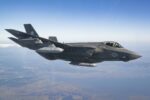Kazakhstan has unveiled its new Taimas 8×8 infantry fighting vehicle (IFV), a domestically branded platform that merges Turkish mobility technology with Chinese firepower. Developed by Kazakhstan Paramount Engineering (KPE), the Taimas represents a strategic attempt to localize production while leveraging proven foreign designs and weapon systems. The vehicle was showcased at the KADEX defense exhibition in Astana and is expected to become a key component of Kazakhstan’s mechanized forces.
Turkish Chassis Foundation: Otokar Arma as the Base
The foundation of the Taimas IFV is rooted in the Otokar Arma 8×8 armored vehicle platform from Turkey. Originally developed by Otokar for modularity and adaptability across mission profiles—ranging from troop transport to command-and-control—the Arma has been exported to several countries including Bahrain and the UAE. In Kazakhstan’s case, KPE has acquired a license for localized production of the chassis under its own branding.
The Arma-based chassis offers amphibious capability without preparation (except for trim vane deployment), independent suspension for off-road mobility, and scalable protection levels up to STANAG Level IV depending on configuration. It can carry up to nine dismounts plus crew and features an engine mounted at the front-right side—providing better protection for troops during frontal engagements.
Chinese Firepower: Norinco’s Remote Weapon Station
The most distinctive feature of the Taimas is its armament suite—a remote-controlled weapon station (RCWS) believed to be derived from NORINCO’s Red Arrow or similar family of turrets. The turret integrates a stabilized 30 mm autocannon (likely based on the ZPT-99 or similar), coaxial machine gun (7.62 mm), and twin launchers for anti-tank guided missiles (ATGMs), possibly HJ-73 or HJ-10 variants.
This combination gives the Taimas both direct-fire support capability against infantry and light armor as well as anti-armor reach against heavier targets at standoff ranges exceeding 4 km. The RCWS includes day/night electro-optical sights with thermal imaging and laser rangefinder—enabling hunter-killer engagement modes even under degraded visual conditions.
Local Assembly and Industrial Strategy
Kazakhstan Paramount Engineering—a joint venture between South Africa’s Paramount Group and Kazakh state interests—has positioned itself as a regional hub for armored vehicle production since its founding in Astana in 2015. The facility previously produced Barys IFVs based on South Africa’s Mbombe series but has now pivoted toward more modular platforms like the Taimas using international components.
According to statements from KPE officials during KADEX, over half of the components used in Taimas are sourced locally or regionally—with ambitions to increase domestic content over time. This industrial localization aligns with Kazakhstan’s broader defense modernization roadmap aiming for reduced reliance on Russian platforms post-Ukraine war sanctions environment.
Operational Role Within Kazakh Armed Forces
The Kazakh military operates a mix of legacy Soviet-era BMPs alongside newer Western-style vehicles such as Barys variants and Turkish Otokar Cobra II MRAPs. The introduction of Taimas is intended to fill a capability gap between tracked IFVs like BMP-3s and lighter wheeled APCs by offering both firepower and strategic mobility across Central Asia’s varied terrain.
Key missions envisioned include mechanized infantry support, convoy escort in asymmetric environments, peacekeeping deployments under UN mandates, and cross-border rapid reaction roles within CSTO frameworks. Its amphibious capability also allows deployment across Kazakhstan’s numerous rivers without engineering bridging assets.
Export Potential Amid Shifting Alliances
With geopolitical shifts reshaping Central Asia’s defense procurement strategies—particularly due to Russia’s declining export reliability—the Taimas may find traction among neighboring countries seeking affordable yet capable wheeled armor solutions not tied exclusively to NATO or Russian supply chains.
- Uzbekistan: Has shown interest in joint production agreements; already cooperates with China on UAVs.
- Azerbaijan: A known customer of both Turkish arms and Chinese optics; potential buyer if trials succeed.
- Mongolia: Exploring modernization options; limited budget may favor hybrid platforms like Taimas.
- Africa/Middle East: Paramount Group may market it via existing networks if export clearance is granted by Astana-Beijing-Ankara triad.
Challenges Ahead: Integration & Standardization
Merging Turkish mobility systems with Chinese fire control electronics poses non-trivial integration challenges—especially regarding digital bus compatibility (CANBus vs proprietary protocols), power management across subsystems, electromagnetic interference shielding, and maintenance training pipelines. Additionally, sourcing spare parts from two different geopolitical blocs could complicate sustainment unless KPE develops robust local MRO capabilities.
No confirmed NATO STANAG compliance certifications have been disclosed yet for either ballistic or mine protection levels beyond Level III baseline—which could limit interoperability or peacekeeping deployment eligibility unless further testing is conducted under UN/NATO validation frameworks.









